The living room is an essential part of any home, and the tiles you choose for it can have a significant impact on how it looks and feels. They’re just as important as the decorations and wall art you choose. Not only do your living room tiles need to look good, but they also need to be of good quality and the right size. Picking the perfect tiles might seem like a daunting task, but it’s essential to get it right. In this article, we’ll help you choose the right tiles for your living room.
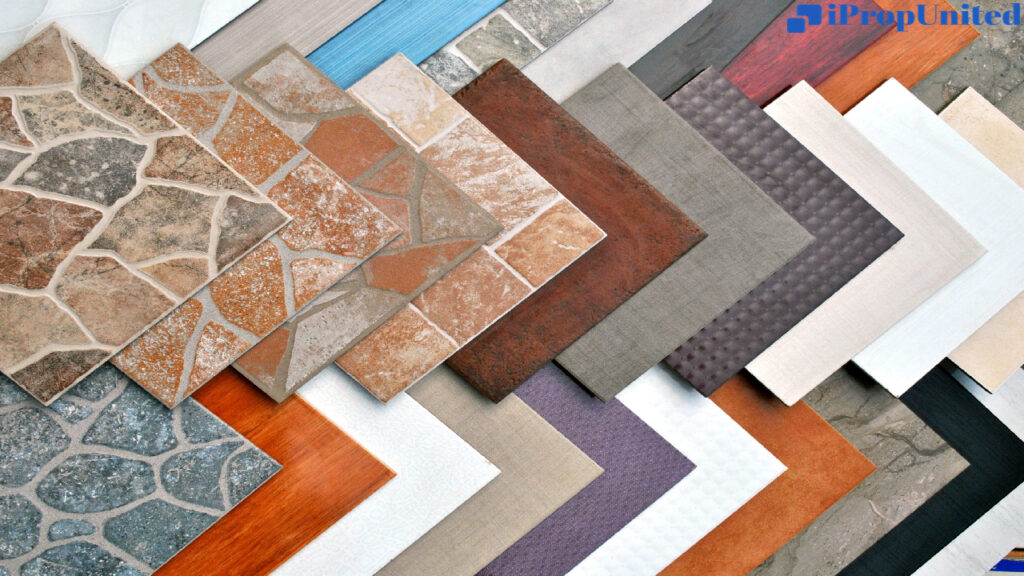
Tiles are a popular choice for modern homes because they are durable, easy to care for, and stylish. You can choose from a variety of tile materials, such as stone or porcelain. When choosing tiles for your living room, you should consider their texture, pattern, size, quality, and cost. By selecting the right tiles, you can give your living room a fresh new look and enhance the beauty of your home. We’ve put together a guide to help
Types of tiles for living room
Looking for the right type of tile to use in your living room? Here are five options to consider:
Stone Tile
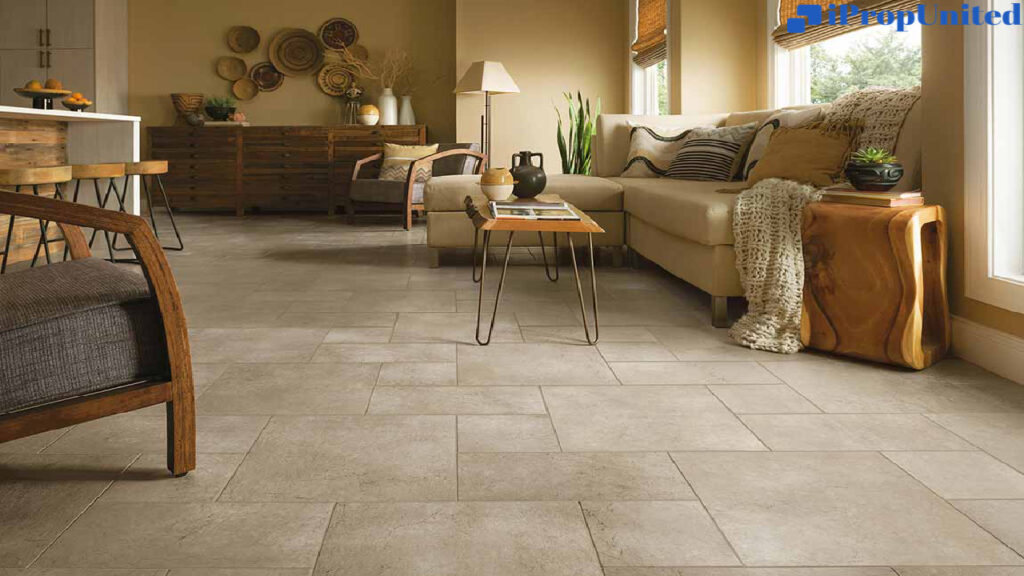
Stone tiles like travertine or slate have a natural look that adds rustic charm to your living room. They come in different earthy tones and textures, but they need regular sealing to keep their durability.
Vinyl Tile
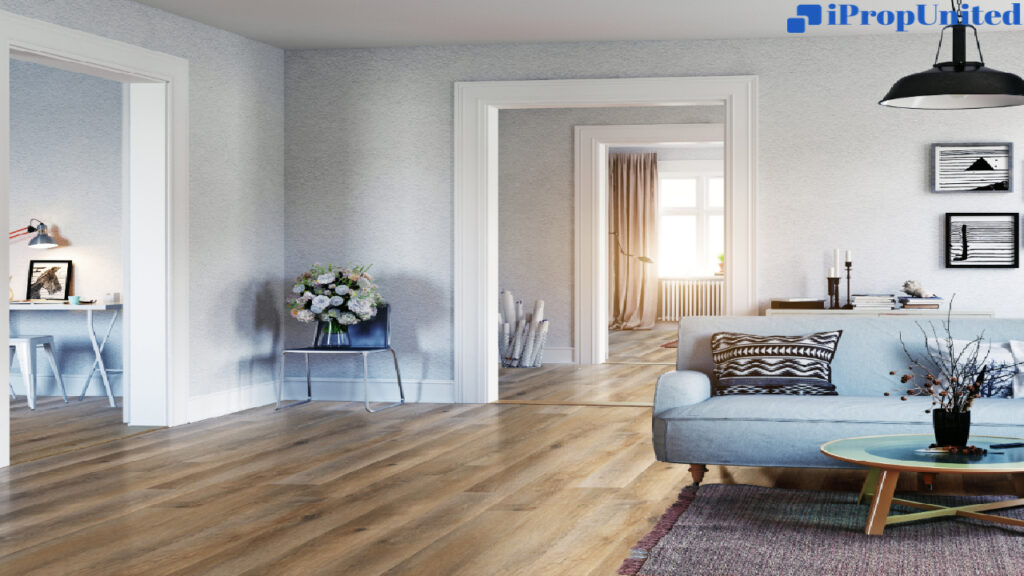
Vinyl tiles are budget-friendly, versatile, and easy to maintain. They come in different designs, including wood, stone, and abstract patterns, and are resistant to moisture and high traffic.
Porcelain Tile
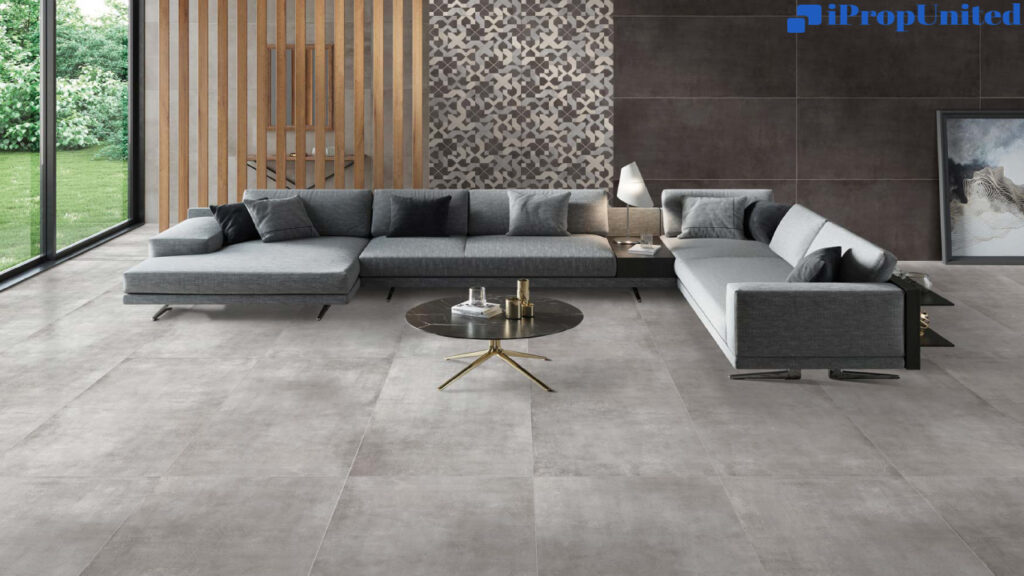
Porcelain tiles are known for their sophistication and durability. They look like natural materials such as marble or wood, but they are highly resistant to stains and scratches. They’re a good choice for living rooms because they don’t absorb water, making them long-lasting.
Mosaic Tile
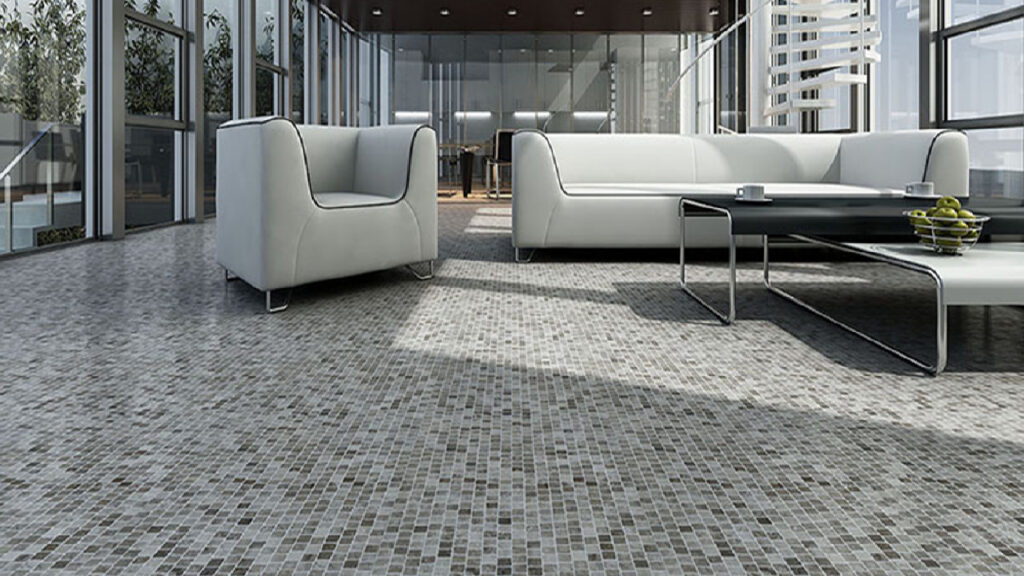
Mosaic tiles come in different designs and materials, such as glass or ceramic, and offer endless possibilities to add personality to your living room
Tips for selecting quality tiles for living room
Here are some things you should keep in mind while selecting tiles:
- Choose tiles that are made of Porcelain or Ceramic, as they are known for their durability and ability to resist wear and tear. These materials ensure that your tiles will look beautiful and last a long time, especially in high-traffic areas like floors and walls.
- Look for tiles with a high-quality surface finish that is easy to clean and resists stains. This will help to keep your tiles looking great for years to come.
- Make sure that the tiles you choose are thick enough for their intended use. Thicker tiles are generally more durable and able to withstand daily use without chipping or cracking.
- Check the water absorption rate of the tiles, especially if you’re planning to use them in areas that are prone to moisture. Tiles with low water absorption rates are less likely to be damaged by water exposure, making them ideal for use in bathrooms, kitchens, or any other space where spills can happen.
- Make sure that the tiles you choose have consistent colors across the entire batch. This will ensure that they look great when installed and provide a seamless and aesthetically pleasing appearance.
Ideal-size tiles for living room
The ideal tile size for a living room depends on various factors, including the room’s dimensions, layout, and personal preferences. One of the common tile sizes used for the home is 18×18 inches or 24×24 inches. These large tiles not only expand the space but also help to create a more open and cohesive look. They also reduce the number of grout lines, providing a smoother and more continuous surface.
Calculate the number of tiles for living room
Are you wondering how to calculate the number of tiles needed for a room? It’s important to choose the right size of tiles to create the perfect ambiance. But how do you know how many tiles you need? Here’s a simple guide:
Measure the room
Find out how long and wide the room is in feet. Then multiply these two numbers to find out the square footage of the room.
Consider wastage
It’s always a good idea to add a bit extra when calculating how many tiles you need. This is because you might make mistakes or need to cut some tiles to fit the room. We recommend adding around 10% extra, but it can vary depending on the room and tile layout.
Calculate the total area
Once you’ve added some extra, multiply the total square footage by the percentage you added. This gives you the total square footage needed, including the extra tiles for waste.
Find out the tile size
Next, you need to know the size of the tiles you plan to use. If the tiles are in square feet, just divide the total square footage needed by the size of each tile. This will give you the total number of tiles required for your room.
Total tiles = Tile size/total square footage with wastage
Ideal colors for tiles for living colors
If you’re planning to give your living room a fresh new look, choosing the right tile colors can make all the difference. Here are some tips to help you select the perfect tile colors:
- Consider the overall style and colors of your living room. You want to choose tile colors that complement or contrast with the predominant hues in the room. This will help create a cohesive and visually appealing space.
- Think about how much natural light your living room gets. Lighter tile colors can make a room feel more open and airy, while darker colors can add warmth and coziness. Choose tile colors that work well with the lighting conditions in your room.
- For smaller living rooms, lighter-colored tiles can help create the illusion of space, making the room feel larger. In larger rooms, you have more flexibility to mix and match lighter and darker tiles to add visual interest.
- It’s also important to consider the colors of your existing furniture and decor. You want to choose tile colors that harmonize with or provide a complementary contrast to your furnishings. This will help ensure that your tiles enhance the overall aesthetic of the room.
- Don’t forget to get samples of the tiles for living room. This will give you a chance to see how the colors look under different lighting conditions and alongside your furnishings. It’s a hands-on approach that can help you make a more informed decision.
Some latest trends for living room flooring
There are some great trends happening in the world of flooring design. Here are some of the latest options to consider:
Luxury Vinyl Plank: This flooring option looks like hardwood but is actually made of vinyl. It’s a great choice because it’s durable, easy to maintain, and affordable. Plus, it’s water-resistant, which makes it perfect for any room in your home.
Wood-Look Porcelain Tiles: Porcelain tiles that look like wood are gaining popularity because they offer the timeless charm of hardwood floors, but are more durable and moisture-resistant. You can choose from a wide variety of wood species to get the look you want.
Large Format Tiles: If you’re looking for a modern and sophisticated look, large-format tiles might be the way to go. These tiles are bigger than traditional ones, which creates a seamless and expansive appearance. Plus, fewer grout lines mean less cleaning.
Natural Materials: If you’re interested in eco-friendly options, consider natural materials like cork and bamboo. Cork is comfortable to walk on and has a unique texture. Bamboo is renewable and environmentally friendly.
Mixed Material Floors: If you’re feeling adventurous, consider mixing different flooring materials in the same room. This approach allows for creative design expressions and can add layers of texture and personality to your living room.
Final Thoughts
When choosing tiles for living room, consider factors like size, material, color, and style. Make sure to balance practicality with aesthetics to ensure the floor is durable and functional. With so many options available, you’re sure to find the perfect fit for your home.
Follow and Connect with us: Twitter, Facebook, Linkedin, Instagram








